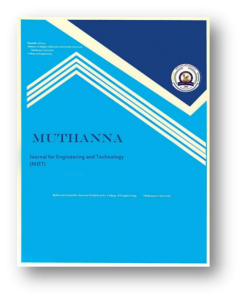MUTHANNA JOURNAL OF ENGINEERING AND TECHNOLOGY (MJET)
Research Article:
عمر حازم خروفة
قسم هندسة العمارة/جامعة الموصل
E-mail addresses: omararch2003@gmail.com
ABSTRACT
Sustainability concept with all its multi levels and branches is considered one of the most important concepts used within many developmental sectors today which is ruled by technological, political and economical challenges equally .The modern presentations of sustainable architecture concept has referred to the existence of many sides which are missed by many of us and classified outside sustainable architecture concept, furthermore, most of these presentations have be raised during the second half of the last century, but the new century came with new presentations which adopted new forms of the concept, all sustainable architecture presentations referred to the possibility of applying it according to environmental, social, economical and functional considerations. Treatment of these considerations is with, first: physical relates to the tangible sides such as spaces and resources, while the second side, is behavioral connected to the humanitarian characteristics related to the concept with all its ideas and directions concerning the movement function, activity and living status, etc. The current research deals with the criticism and analysis (methods and means of applying sustainability concept in the constructions) through a descriptive analysis for all the sustainable constructions and the effect of the applying the concept on them with different forms.
Keywords: Sustainability – Sustainable Architecture – Sustainable Buildings
